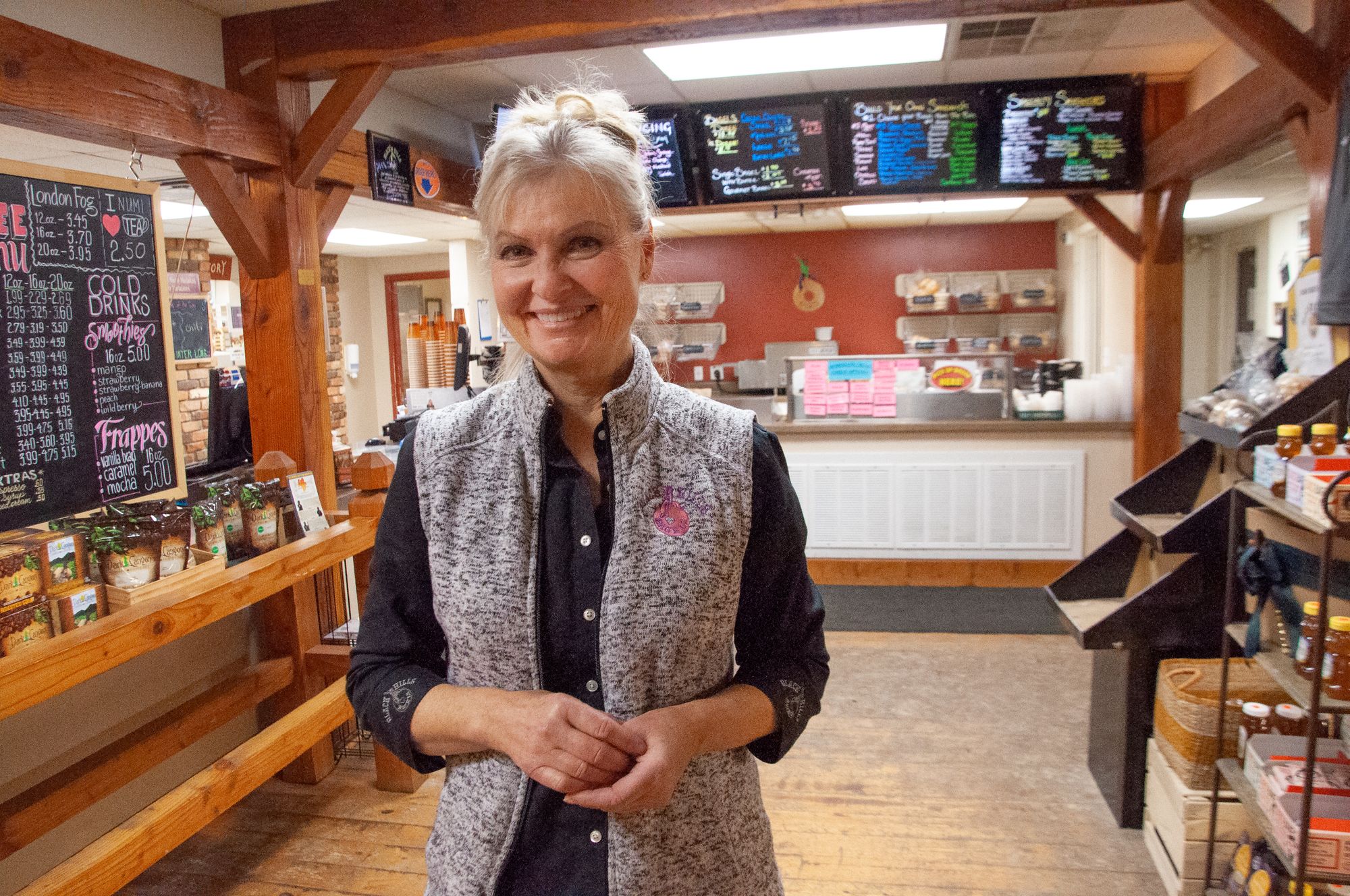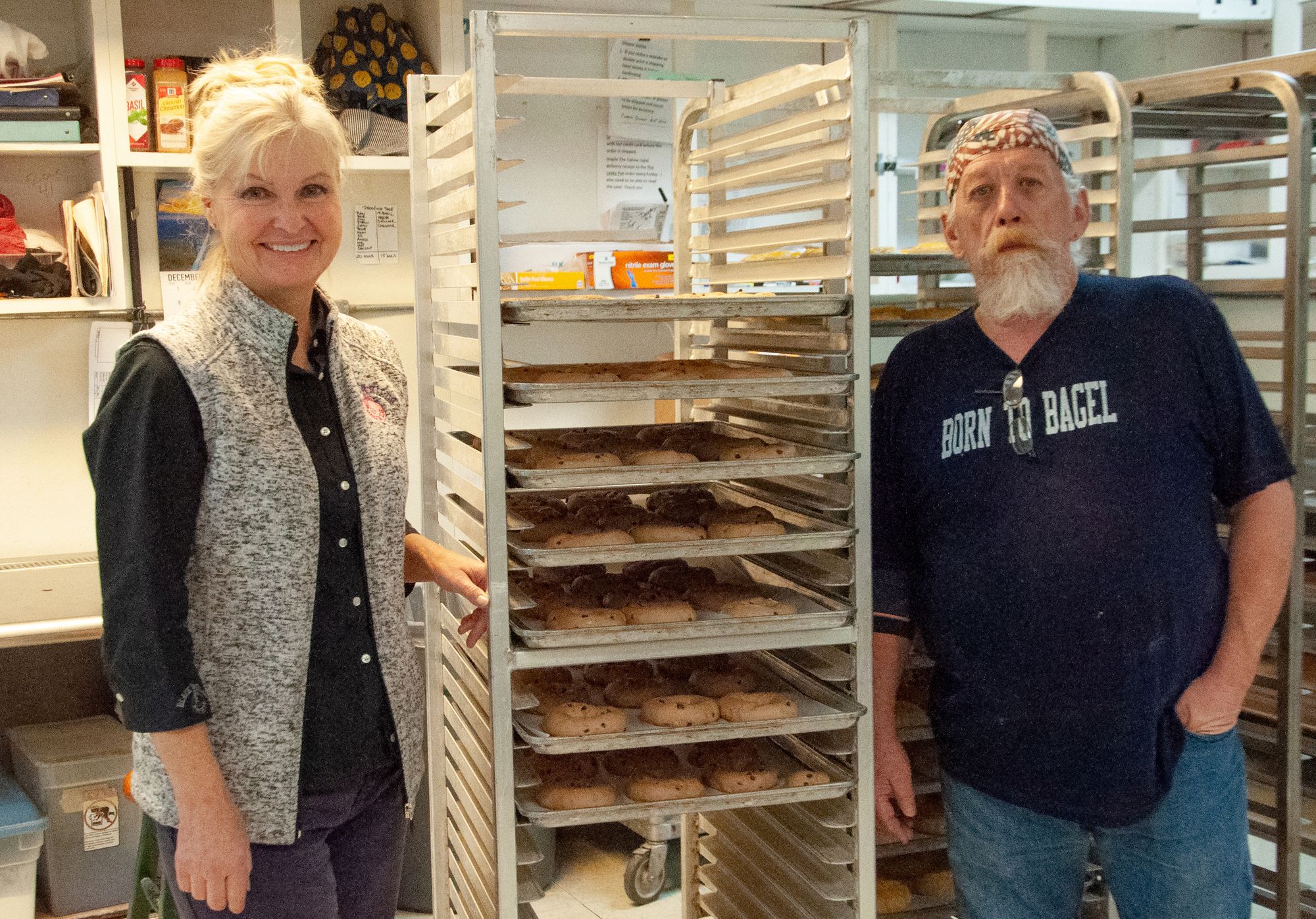The rapid and expansive transformation of the South Dakota retail marketplace has created uncertainty for many businesses and the more than 97,000 state residents employed within the industry.
Retail sales remain on the rise, but the ongoing market disruptions — dramatic changes in who buys what, how and from where — are threatening some retailers, particularly in smaller towns.
Many employees and owners of some of the state’s roughly 13,900 retail establishments have felt the bite of rapid change.
Retailers face almost constant change ranging from the emergence of giant online retailers to evolving technology including delivery services to the rapid growth of low-price “dollar stores” that can hurt long-time local retailers in rural areas.
What emerges over the next decade will be a marketplace shaped by conflicting consumer desires for better convenience and lower cost versus a desire for something unique, social and enjoyable.
Transformation has always been part of the retail story. Since craftsmen gathered in open-air markets through the rise of department stores and shopping malls, shoppers have hastily embraced new trends and discarded old. Across the state, struggling shopping malls and aging rural main streets demonstrate this evolution.
Even in small cities that have been aggressive and progressive in promoting local retail, such as Sisseton in Roberts County, fears remain that some businesses won’t be able to keep up with the fast and frequent changes in the retail marketplace.
“It’s scary when you’re a smaller town, seeing people going out of town to buy groceries and gifts,” said Lacey Babekuhl, who works in accounts and marketing for a Sisseton building center and formerly served as a local housing and redevelopment official. “You really do run the risk of losing everything your neighbors have worked for all of their lives. Families, friends and neighbors have put their savings on the line for this community.”
Meanwhile, the constant change is creating opportunities for some retailers and business owners, particularly those willing to adapt and do so quickly.
South Dakota retail sales have grown in the past several years, climbing from $25.1 billion in 2013 to $28.5 billion in 2018, according to state Department of Revenue data.
Many local retailers have added their own online presence and try to stay up on successful business trends.
Debra Jensen, co-owner of Black Hills Bagels in Rapid City with her husband, Jack, said they strengthen their position in a competitive market by connecting with employees and customers in ways that chain stores cannot.
The business has endured a years-long construction project on the road it fronts and the arrival of a competing bagel chain directly across the street.

“We can’t compete on price alone,” Debra Jensen said. “But there’s a market for hand-formed bagels, custom sandwiches and enhanced customer service.”
Staying vigilant about trends and being nimble in reacting to them — while also holding firm to longstanding principles — has also helped the business thrive, Jensen said.
She said the couple realized long ago that for the store to remain successful they would have to pay attention to what the corporations were doing but do it better. Three years ago, Debra read an article that by 2020, 40 percent of restaurant business will be delivery.
They found people weren’t willing to pay for delivery service, but they weren’t willing to tip. Over time, larger business orders have compensated for the small ones, making the delivery system profitable.
Online evolution not slowing
For now, the pace of the current retail transformation toward online sales isn’t easing. Internet sales should account for 12.4 percent of all retail sales this year, up steadily from 6 percent in 2013. Online sales are predicted to account for 14 percent of the retail market next year, and the Centre for Retail Research expects online growth will continue for a decade.
Increasingly, online also takes a larger bite of Christmas sales. Amazon collects a third or its sales revenue during the fourth quarter, according to annual reports. This holiday season, sales at online and other remote retailers are projected to surpass those at brick-and-mortar stores, climbing 12 percent over last year.
Amid last year’s landmark closures at Sears, ShopKo and Kmart, the Centre for Retail Research declared a retail apocalypse, but mostly it was 17 national chains with outdated business models that disappeared. Stores in South Dakota were among them, but that alone doesn’t signify the demise of local retailers.
Meanwhile, the ongoing proliferation of discount retailers further complicates matters for longtime retailers in smaller South Dakota towns. The rapid spread of dollar stores, following closely upon the spread of Walmart super centers, further erodes already slim profit margins there.
Walmart began 2019 operating 15 super centers and two clubs in South Dakota. Dollar General, which operates 15,370 Stores in 44 states, had 52 stores in South Dakota last February, when the company announced plans to open 975 more U.S. stores. Dollar Tree, which operates 15,000 Family Dollar and Dollar Tree stores in 48 states, including 43 in South Dakota, planned to open 546 more stores nationwide. Dollar stores enter towns too small for Walmart.
Across the Northern Plains, the spread of dollar stores — which buy dry grocery goods in volume – place additional pressure on local grocers. In August, North Dakota lawmakers began studying ways to support smaller grocers, but no obvious solutions came forth. Over the past five years, 39 out of 137 full-service grocery stores in North Dakota towns with fewer than 2,100 people have closed or no longer offer full service, according to the North Dakota Rural Electric & Telecommunications Development Center. Anecdotal evidence shows the same trend occurring in South Dakota.

Some South Dakota towns of roughly 1,000 people now boast competing dollar stores. Longtime retailers are countering with programs to boost customer loyalty and hoping for the best. For many rural consumers, dollar stores offer savings, competition and convenience. The danger for smaller communities is one of slipping below the critical mass of retail offerings. If shoppers must travel to larger towns for produce, meat and dairy, they will likely seek other supplies there as well, hastening a community’s decline.
In general, small towns have punched far below their weight in retail trade since at least the 1990s, according to a 2017 study by Anil Giri of the University of Central Missouri and Bruce Johnson at the University of Nebraska-Lincoln. Using data from the Nebraska Department of Revenue between 1990 and 2015, the study shows a town’s population is the single largest factor affecting retail draw.
Among the findings, towns with fewer than 500 people leaked nearly half of their retail potential to larger towns, based on proportionate sales which factor population and average local income. The metropolitan counties home to Omaha and Lincoln, meanwhile, captured $1.4 billion of taxable retail sales beyond their proportionate share just in 2015.
Counties whose largest towns contained fewer than 2,500 people generally leaked retail sales while those above 5,000 drew extra customers. Towns between 2,500 and 5,000 held their own, with some leaking and some gaining. Relative distance to a larger trade center, local transportation patterns and other factors were determinant.
In South Dakota, only 28 of the 312 places for which the census provides population estimates have more than 2,500 people, and only 18 have more than 5,000 people. Meanwhile, fewer than 30 state cities show signs of meaningful growth over the past decade, according to census figures, and roughly half of the growth appears concentrated in Sioux Falls.
Bigger cities find success in reinvention
Nathan Sanderson of the South Dakota Retailers Association sees a resurgence on main streets among the whirl of retail change. In the era of decline of the shopping mall, some also see a downtown renaissance as customers seek unique social experiences and local wares.
“Take a look around at Sioux Falls main street and downtown Rapid City,” he said. “Look at what Main Street Square and the presidential sculptures have done for Rapid City.”

The market has seen a shift in consumer preference away from standard shopping malls toward the unique and special, the handmade items, he said. In Rapid City, Prairie Edge, a Native American arts and gift store, has become a destination, performing the role once claimed by big anchor stores in shopping malls.
But creating local retail excitement in trade centers like Sioux Falls, Rapid City and Aberdeen differs fundamentally from doing so in smaller towns. Sanderson does not believe, however, that city size is the main determining factor.
“The determining factor is the extent to which the people of the community invest in that community,” Sanderson said. In Faulkton, Lemmon, De Smet, Winner and others, there are groups of civic minded business people interested in seeing those towns grow and thrive.
“You have a group of people in Miller making an active effort to make the community strong,” he said. Town leaders in some communities are actively thinking about how to make themselves a destination and remain relevant.
These pockets of brick-and-mortar resilience belie the simplified narrative of local retail dying at the hands of expanding online.
“Internet sales are a growing component of retail, but that doesn’t mean the death of retail,” Sanderson said.
Of all the businesses that closed in 2019, stores represented by just 17 retail chains – the Sears and the ShopKos — account for 73 percent of total closures, he said. And if you look at local ShopKos, their demise wasn’t related to falling sales at South Dakota stores but to a national business model that did not adapt.
At the same time, he said, longtime brick and mortar have embraced opportunities made possible by an online presence. Black Hills Bagels in Rapid City has created a website that allows online ordering for pickup or delivery, he said.
“A lot of businesses you wouldn’t think would do so are using online technologies to make their mom-and-pop brick and mortar stores thrive,” he said.
Putting their best foot forward
Rand Wergin, an associate professor of marketing in the business school at the University of South Dakota in Vermillion, has researched the relative retail pull South Dakota communities back to 1999. For example, people from outside of Yankton spend $1 dollar inside the city for every dollar Yankton residents spend elsewhere, giving it a pull factor of 1. A score below 1 leaks retail and above 1 demonstrates pull.
Unlike the Nebraska study, Wergin looks at three classes of city size – below 3,000 people, between 3,000 and 10,000, and those above 10,000. While his findings show size does matter, it also demonstrates it’s not the only determinant in South Dakota.
For 2018, the state’s largest cities — Sioux Falls, Rapid City and Aberdeen — pulled more than their proportionate share, as expected. Sioux Falls scored 1.4, Rapid City scored 1.2 and Aberdeen nearly 1.9. Retail is doing especially well there.
Also as might be expected, smaller cities living in the shadow of larger neighbors performed less well, but there were important distinctions.
Canton, lying in the shadow of Sioux Falls, scored 0.4 in 2018 – well down from 0.7 in 2013. Meanwhile, growing Box Elder, in the shadow of Rapid City, also scored 0.4 in 2018, but that city’s score is four times its 2013 performance of 0.1. Things are improving there.
Among the best performers in recent times were the Black Hills tourist towns of Hill City, scoring a 3.0, and Deadwood, with 2.1.
For heavily rural South Dakota, as opposed to Nebraska, Wergin envisions an archipelago of retail islands serving broad functions. Among the largest South Dakota cities, he said, Aberdeen wins consistently because of the long distances to larger towns. Other cities thriving for similar reasons include Winner, Chamberlain and Platte.
Retail pull can be further divided into a number of economic categories, like auto sales, apparel, eating. Changes in certain categories over time can be illuminating. Sioux Falls, for example, draws heavily in clothing sales – a score of 1.7 in 2018 – but that’s less than half of its 2013 score of 3.5. Over that same period, Rapid City remained strong scores across all sectors except in furniture sales. The data suggests that Sioux Falls’ past successes in drawing regional clothing shoppers may explain its current pains as clothing sales move online.
One category Wergin views with special significance is “miscellaneous,” a catchall which accounts for about a third of all retail sales. A town with a robust miscellaneous score means people visit for a broad variety of items, demonstrating overall strength, he said.
Aberdeen scores highest in miscellaneous. Sioux Falls maintains strong miscellaneous scores, but Rapid City scores poorly at just 0.5. Huron, meanwhile, with a population of under 14,000, scores 1.7.
Wergin said some people will be hurt by the market changes, but a lot depends on how well individual communities adapt. The changing marketplace doesn’t necessarily spell doom. People still want that social shopping experience, he said. Girls in his University of South Dakota classes all have Amazon Prime accounts, he said, but they still like to get together, shop and have lunch.
A recent New York Times story suggests that most of the retail sales force displaced by online’s expansion won’t be unemployed long. Workers hit by the apocalypse haven’t shown up in detailed labor statistics, probably because other retailers are actively recruiting. Those hurt most by the broad retail displacement are store owners, managers and workers with longtime seniority.
David Bruns, manager of the Food Center in Redfield, population 2,300, is doing what he can to keep his business thriving despite the challenges created by a Dollar General.
“They’re affecting all small towns,” Bruns said of dollar stores.
To build customer loyalty, the Food Center has launched a rewards program, offering points for every dollar spent, and a saver card, which gives stamps redeemable for glass products.
“It’s a way of thanking customers, of building loyalty,” he said. “I don’t know if the dollar stores give back.”
The Redfield Food Center has also switched warehouses to bring in different brands, hoping to distinguishing itself from other regional stores.
Redfield customers, Bruns said, still lament the town’s loss of their ShopKo, which also sold groceries. The closure, however, didn’t cause much of a bump in Food Center sales. If anything, he said, people now leave town for things that only ShopKo sold, so now they also may be grocery shopping outside of town.
The lack of local competition hasn’t affected his prices, Bruns said.
“I’m still trying to compete against Walmart and the bigger stores, so I keep prices aggressive as if there were two stores here,” he said.
Bruns is also part owner of the Food Center in Linton, N.D., population 1,000. A Family Dollar there was joined a few months ago by a Dollar General.
“We’ll see how things go once we get through holiday season,” Bruns said. The construction of an area wind farm has helped retailers, but construction is winding down. “Once they leave, we’ll see what will really happen.”
The North Dakota store is offering identical rewards programs to those in Redfield.
The dollar stores will change the landscape, Bruns said. “It’s just they’re coming everywhere,” he said. “It’s kind of sad in my opinion.”
“Internet sales are a growing component of retail, but that doesn’t mean the death of retail ... a lot of businesses you wouldn’t think would do so are using online technologies to make their mom-and-pop brick and mortar stores thrive." -- Nathan Sanderson of the South Dakota Retailers Association
Local businesses have been there a long time, and they’ve dedicated their lives to serving their small towns. “I feel for those people.”
Over time, Lacey Babekuhl has developed affection for Sisseton. The Sioux Falls native vacationed in the town as a kid. As a teenager she couldn’t imagine living in a place with “nothing to do.” Now, she can’t imagine living anywhere else, and saving the town is part of her new job.
Disagreements get handled differently in Sisseton, where almost everyone knows everyone, Babekuhl said. People hash out their business differences over coffee and then share a beer socially that same night.
Sisseton has about 2,400 residents, and the population hasn’t changed much in 20 years.
The event that stimulated retailers to take action last summer was a major road and sewer reconstruction project that detoured shoppers around the town. “This year was tough for us,” Babekuhl said.
Last year, a Dollar General store joined the town’s Family Dollar, but Babekuhl said most local retailers don’t view the discount stores negatively.
“We’ve never looked at any new business as a threat,” she said. “We look at it as an addition to the community.”
A few months ago, retailers formed a non-profit association, built and launched an app to bundle local sales deals — like an online shopper, and began recognizing local retail sales staff for exceptional service. The big focus is on educating the community about the importance of buying local.
“Amazon is not going to help fund your kid’s baseball team,” Babekuhl said. “That’s the local businesses that do all of that.”
Babekuhl works as an accounts specialist at Tri State Building Center with the understanding that promoting Sisseton is part of her job. The goal is to really connect with local customers and the community, Babekuhl said.
“At this point, we’re seeing a lot of engagement,” she said. The app for bundled sales promotions has been downloaded 800 times.
“Sisseton is seeing a comeback on Main Street and Veterans Avenue,” she said. “There are new shops, and boutiques more aimed at the younger demographic.”
Appealing to the next generation and creating a better experience for shoppers will be key, she said.
“This is about growing the community,” she said. “We want to make this a place where people want to visit and a place where people want to come back to after college.”




